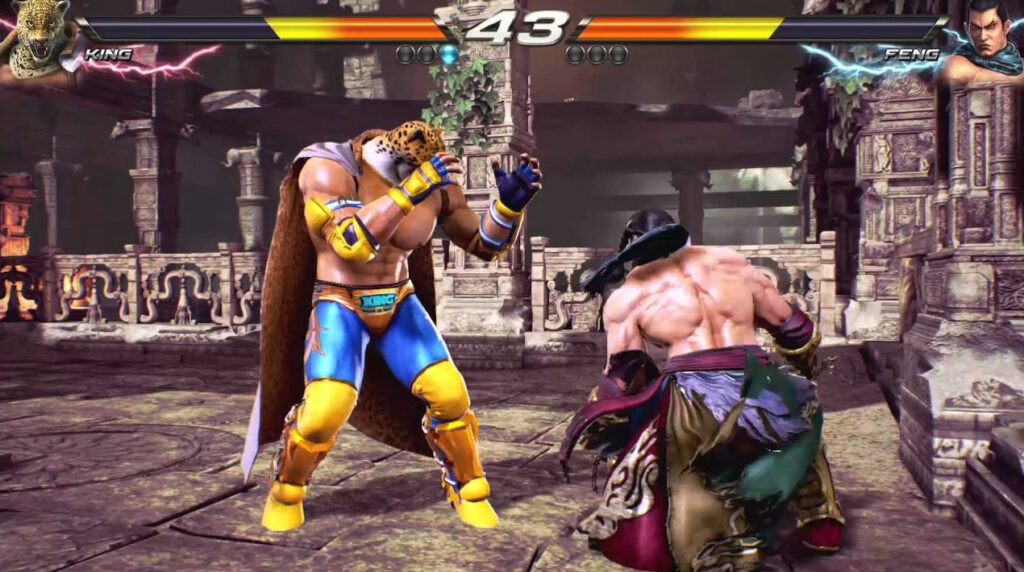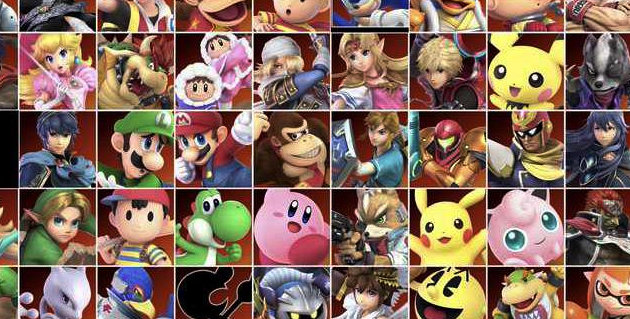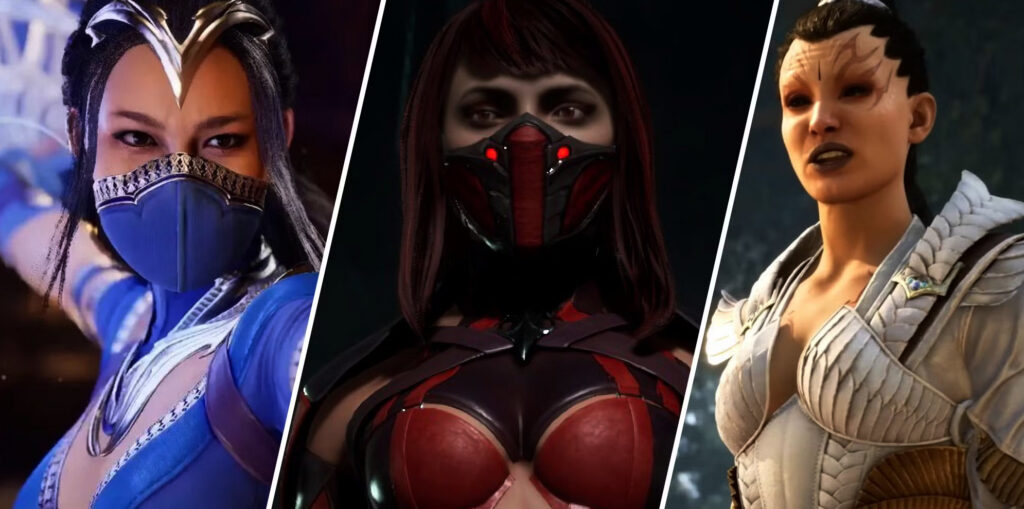Introduction to Fighting Games
Fighting games are a genre of video games characterized by close-ranged combat between a limited number of characters, often presented in a 2D or 3D environment. Players control a single character, engaging in battles against either computer-controlled opponents or other players. The fundamental mechanics of fighting games include the use of various moves, including punches, kicks, and special attacks, paired with defensive actions such as blocking and dodging. The goal of these games is to reduce the opponent’s health points to zero, typically achieved through a series of well-timed attacks and strategic maneuvers.
The appeal of fighting games lies in their intense gameplay and the skill-based nature of combat, which requires quick reflexes, precise timing, and deep understanding of character abilities. This competitive aspect fosters a vibrant community, with many players engaging in local and online tournaments. Additionally, the genre offers a variety of play styles with diverse characters, each endowed with unique moves and fighting techniques. Whether players enjoy a fast-paced brawler or a technical fighter that emphasizes combos and counterplay, there is a fighting game that accommodates every preference.
Since their inception in the arcade era of the late 20th century, fighting games have undergone significant evolution. The genre witnessed a substantial transformation with the introduction of 3D graphics, enabling more dynamic environments and character movement. Titles like “Street Fighter II,” released in 1991, laid the groundwork for future fighting games by popularizing combo systems and multiplayer mechanics. Subsequent entries in the genre have not only refined these concepts but also expanded to include online multiplayer capabilities and cross-platform play, ensuring that fighting games continue to thrive in the modern gaming landscape.
The Birth of Fighting Games
The origins of fighting games can be traced back to the 1980s, a time characterized by rapid technological advancements in video gaming. One of the earliest titles that laid the groundwork for the genre was ‘Punch-Out!!’ released in 1987. This game introduced players to a unique aspect of gameplay that focused on one-on-one combat, allowing them to engage in battles against various opponents. The innovative use of 2D graphics and real-time animations captured players’ imaginations, setting a precedent for future fighting games.
Following ‘Punch-Out!!’, the genre underwent a significant transformation with the debut of ‘Street Fighter’ in 1987, developed by Capcom. This title marked a pivotal moment in the evolution of fighting games, introducing players to a competitive environment that emphasized unique character abilities, diverse fighting styles, and strategic gameplay. The inclusion of player-controlled special moves added depth to combat systems, elevating the engagement levels and encouraging player mastery. The game’s success paved the way for sequels and inspired various franchises that continue to thrive today.
The cultural context of the 1980s and 1990s significantly influenced the emergence of fighting games. As arcades became popular social hubs, players sought thrilling experiences that could be shared with friends. The competitive nature of fighting games fit perfectly within arcade environments, fostering camaraderie and rivalries among players. This era saw the rise of multiplayer combat, as enthusiasts gathered to showcase their skills, contributing to the genre’s popularity and longevity.
Innovations in hardware, such as improved graphics and sound systems, also enhanced the gaming experience, allowing developers to create more immersive and visually appealing fighting games. These advancements expanded the genre’s reach and solidified its place within the gaming community. As the 1990s progressed, fighting games became a staple in both arcades and home consoles, ultimately leading to the rich and varied landscape we see today.
Golden Era of Fighting Games
The late 1990s to early 2000s marked a significant turning point in the history of fighting games, often referred to as the golden era. This period witnessed the rapid evolution of gameplay, characterized by the introduction of 3D graphics and diverse character rosters, which significantly enriched player experiences. Iconic titles such as ‘Tekken’, ‘Mortal Kombat’, and ‘Guilty Gear’ became emblematic of this transformative phase.
‘Tekken’, released in 1994, began a revolutionary trend by showcasing full 3D graphics, allowing players to navigate characters in a more dynamic manner than ever before. This innovation not only enhanced visual appeal but also introduced new gameplay mechanics, including sidestepping and verticality, which added depth to combat strategies. The game’s expanded roster boasted varied fighting styles, appealing to a broad audience while fostering a competitive atmosphere among players.
Meanwhile, ‘Mortal Kombat’ continued to captivate audiences with its established franchise while also adapting to the changing landscape. The release of ‘Mortal Kombat 4’ in 1997 signified its transition into 3D, integrating more complex character movements and richer environments. Additionally, its notorious finishing moves and compelling storylines further solidified its position during this pivotal period, ensuring its legacy as a leader in the fighting game genre.
In juxtaposition, ‘Guilty Gear’ emerged in 1998, distinguished by its anime-inspired art style and fast-paced gameplay. This title introduced intricate mechanics, including combo systems and unique character abilities that appealed to a niche yet dedicated player base. ‘Guilty Gear’s’ success demonstrated that there was room for innovation alongside established franchises within the fighting game arena.
Overall, the golden era significantly shaped the future of fighting games. With advancements in graphics, gameplay dynamics, and character diversity, these titles not only set the standard for subsequent releases but also laid the groundwork for the fighting game community that thrives today.
Evolution into Esports
The evolution of fighting games into the esports arena is a significant chapter in the gaming industry’s history. Throughout the late 20th and early 21st centuries, fighting games transitioned from arcade cabinets to home consoles, gradually fostering a dedicated community of players. This shift not only expanded their audience but also laid the groundwork for competitive play, driving the rise of tournaments and leagues dedicated to these titles.
Competitive events began in earnest with local tournaments, but the advent of major competitions like EVO (Evolution Championship Series) in 1996 marked a turning point, propelling fighting games into the global esports scene. Events like EVO attract thousands of competitors and spectators alike, showcasing top-tier talent from around the world. Players such as Daigo Umehara and SonicFox have become household names, setting benchmarks for skill and expertise in the genre. Their performances spark interest and inspiration in aspiring gamers, solidifying the cultural significance of fighting games within the realm of competitive play.
Platforms like Twitch have further catalyzed the growth of fighting games in esports. These streaming services allow fans to observe live tournament play, interact with players, and engage with the community in real time. The immediacy of this platform enhances the visibility of events and players, creating a vibrant ecosystem where content creators and professional players thrive. Additionally, developers actively support the competitive format by regularly releasing patches and updates, ensuring balance and fair competition. Such measures encourage sustained interest and participation within the professional community, ensuring that fighting games remain ever-evolving and engaging.
In conclusion, the rise of fighting games in the esports landscape illustrates a dynamic melding of competitive spirit and community engagement. As the genre continues to grow in popularity, it is essential to recognize the contributions of tournaments, professional players, and streaming platforms in shaping its trajectory.
Top 10 Most Popular Fighting Games: An In-Depth Look
Fighting games have long captivated audiences with their unique blend of fast-paced action, strategic gameplay, and diverse character rosters. Among the many titles in this genre, a few stand out for their enduring popularity and cultural significance. Here, we delve into the top 10 most popular fighting games, examining their gameplay mechanics, character diversity, art style, and overall impact.
1. Street Fighter V: Released in 2016, this installment of the iconic franchise continues to be a cornerstone of the fighting community. It features a diverse lineup of characters, each with unique abilities and fighting styles, fostering a competitive environment that attracts both casual players and eSports athletes. The game’s art style blends vibrant graphics with exceptional animation, creating a visually appealing experience.
2. Tekken 7: Known for its intricate mechanics and combination-driven combat, Tekken 7 brings a wealth of character customization options, allowing players to personalize their experience. Its cinematic story mode adds a layer of depth, entrancing players with its engaging narrative while maintaining a balance of accessibility for newcomers.
3. Dragon Ball FighterZ: Marrying the beloved Dragon Ball franchise with dynamic fighting mechanics, this game has become a fan favorite. Its stunning 2.5D graphics and fast-paced gameplay resonate with both fighting game veterans and anime enthusiasts. The game’s synergy with teamwork mechanics encourages strategic collaboration within battles.
4. Mortal Kombat 11: Renowned for its brutal gameplay and rich lore, Mortal Kombat 11 offers players a blend of nostalgia and innovation. The return of fatalities and the introduction of customizable character variations enrich the gameplay experience while maintaining the series’ iconic essence.
5. Guilty Gear Strive: This game has revitalized the traditional fighting genre with its striking art style and smooth mechanics. Known for complex combo systems, Guilty Gear Strive caters to both competitive and casual audiences, providing a platform for players to showcase their skills.
6. Super Smash Bros. Ultimate: While a blend of various gaming franchises, its impact on the fighting game scene makes it worthy of mention. With a wealth of characters and stages, its gameplay encourages fun and spontaneous matches, making it a beloved party game.
7. Injustice 2: This game has redefined the superhero fighting genre with its engaging storyline and robust multiplayer mode. Featuring characters from the DC universe, its emphasis on narrative within a competitive structure appeals to both comic fans and fighting game enthusiasts alike.
8. BlazBlue: Cross Tag Battle: Known for its crossover gameplay, BlazBlue encourages strategic team play, effectively utilizing characters from its various franchises. The blend of intricate fighting mechanics and an extensive character roster highlights its appeal.
9. Samurai Shodown: Reviving the classic series, this game emphasizes precise combat and timing, making each duel feel unique. Its visual style pays homage to traditional Japanese artwork, enhancing its cultural impact within the gaming community.
10. King of Fighters XV: Continuing the legacy of its predecessor, King of Fighters XV merges classic mechanics with modern innovations, offering a rich character variety and team-based combat. Fans appreciate the balance between nostalgia and new content.
These fighting games not only showcase technical prowess and innovative design but also play a significant role in shaping the future of the genre. Their reputation and influence continue to inspire both players and developers alike.
The Role of Innovation and Technology
Innovation and technology have played pivotal roles in the evolution of fighting games, transforming gameplay and enhancing player experiences. One of the most significant advancements is the introduction of online multiplayer systems. This development has broadened the accessibility of fighting games, allowing players from different geographical locations to compete against one another, fostering a vibrant and competitive global community. With the implementation of online matchmaking, players can find opponents of similar skill levels, thus improving the overall balance and enjoyment of the gaming experience.
Another innovation that has significantly impacted fighting games is cross-play capabilities. As game developers continue to prioritize player connectivity, cross-play allows gamers on various platforms to compete with each other seamlessly. This feature not only enhances the user base but also enriches the competitive scene, as players are no longer limited to a single console or platform, increasing the longevity and replay value of fighting titles.
In terms of graphics, the improvements in technology have enabled developers to create more visually stunning and immersive environments. Enhanced graphics engines allow for smoother animations and realistic character designs, which are essential in a genre that heavily relies on visual aesthetics for engagement. As a result, modern fighting games often exhibit breathtaking visual effects that contribute to a more thrilling gaming experience.
Moreover, motion capture technology has revolutionized character animation in fighting games. By capturing the movements of professional martial artists and actors, developers can achieve realistic combat animations that add depth and authenticity to each character’s fighting style. This technology ensures that player movements are fluid and responsive, making for a more engaging and lifelike experience.
These advances in innovation and technology have significantly shaped the landscape of modern fighting games, creating an engaging environment that appeals to both casual players and dedicated enthusiasts alike.
Fighting Game Communities and Their Influence
The significant role fighting game communities play in the enduring popularity of these games cannot be overstated. From grassroots tournaments to large-scale eSports events, these communities have fostered a culture that enhances player engagement and elevates the gaming experience. Local clubs and online forums have become essential gathering spots for enthusiasts, where players share strategies, news, and fan-created content, thus forming a tight-knit network built around their passion for fighting games.
Fan-created content, such as tutorials, character guides, and gameplay videos, serves to educate and inspire newcomers while also providing seasoned players with advanced strategies. Platforms like YouTube and Twitch are filled with content that showcases exciting matchups, teaching techniques, and character breakdowns, encouraging more players to join the community. As players learn from these resources, they often feel more connected to the game and its community, reinforcing their investment in the fighting game genre.
Social media platforms have further amplified community engagement. Players utilize platforms such as Twitter, Reddit, and Discord to discuss recent game updates, share fan art, or even organize online tournaments. These interactions not only foster camaraderie among fans but also ensure that fighting games remain relevant within the cultural zeitgeist. The active presence of developers and professional players on these platforms facilitates direct communication, allowing fans to voice their opinions and potentially influence future developments in the games they cherish.
Community events also play a pivotal role in maintaining the popularity of fighting games. Tournaments such as EVO and local matches provide opportunities for players to compete in a supportive environment, helping to forge friendships while elevating their competitive skills. Through these interactions, alliances and rivalries are born, elevating the excitement surrounding tournaments. Ultimately, the spirit of competition, cooperation, and shared love for fighting games ensures their ongoing popularity and relevance in the ever-changing landscape of video gaming.
Cultural Impact of Fighting Games
Fighting games have played a significant role in shaping popular culture while reflecting the evolving dynamics of entertainment. From their inception in arcades during the early 1990s, these games have not only captivated players but have also drawn inspiration from various cultural mediums, including movies, television shows, and anime. The reciprocal relationship between fighting games and these forms of entertainment has created a robust cultural phenomenon.
A prime example is the impact of martial arts films, which influenced the design and narratives of many fighting games. Franchises like “Street Fighter” and “Tekken” embedded elements of martial arts cinematic storytelling, featuring characters that resemble iconic film protagonists. Over the years, we have seen adaptations where characters from popular fighting games graced the silver screen, with varying degrees of success. Notable adaptations, such as the “Mortal Kombat” films and the animated adaptations of various games, showcase how the essence of these games transcends their digital nature, contributing to their broader cultural footprint.
The rise of anime has similarly influenced the direction of fighting games, often leading to crossover events and collaborations that resonate with fans of both mediums. Games like “Dragon Ball FighterZ” illustrate this synergy, as they merge the beloved characters of anime with intricate gameplay mechanics, further solidifying the connection between the two cultures. Moreover, merchandise stemming from these franchises, including toys, collectibles, and clothing, further embeds fighting games into contemporary culture, allowing fans to express their passion in diverse ways.
Ultimately, the cultural impact of fighting games underscores their relevance beyond mere entertainment, establishing them as pivotal elements in a dynamic cultural narrative that continues to evolve and adapt alongside modernity. Their legacy can be observed not only in gaming but also in a multitude of cultural expressions, emphasizing the ongoing dialogue between these fighting franchises and the broader entertainment landscape.
The Future of Fighting Games
The realm of fighting games has evolved significantly over the years, and the future of this genre is poised for even greater transformation. As technology continues to advance, developers are likely to harness new innovations that will enhance gameplay experiences and broaden the appeal of fighting games to diverse audiences. One of the primary emerging trends is the integration of virtual reality (VR) and augmented reality (AR). These technologies have the potential to create immersive environments that allow players to engage in combat like never before, potentially revolutionizing how fighting games are experienced.
Another significant factor in the future of fighting games will be the sustained popularity of cross-platform play. As gaming communities become more interconnected, the ability for players on different platforms to compete against one another can lead to a more vibrant and inclusive environment. This trend is already being embraced by several titles, and it is expected that more developers will prioritize cross-platform functionalities, allowing fighting games to reach a broader audience and extend their lifespan.
Moreover, the rise of esports has injected fresh energy into the fighting game genre. Anticipated titles are expected to incorporate features tailored for competitive play, such as improved matchmaking systems and enhanced spectator modes. This focus on the competitive aspect not only nurtures existing fans but also attracts new players interested in entering the esports arena.
As the genre progresses, developers will likely explore innovative storytelling techniques, enabling deeper narratives that resonate with players emotionally. Additionally, the inclusion of diverse character rosters that reflect various backgrounds can encourage a wider demographic to engage with fighting games. In conclusion, with the advent of new technologies and the continuous evolution of gameplay dynamics, the future of fighting games appears promising and full of potential.


